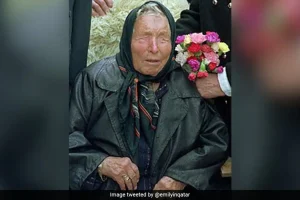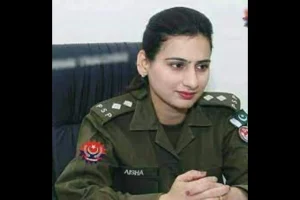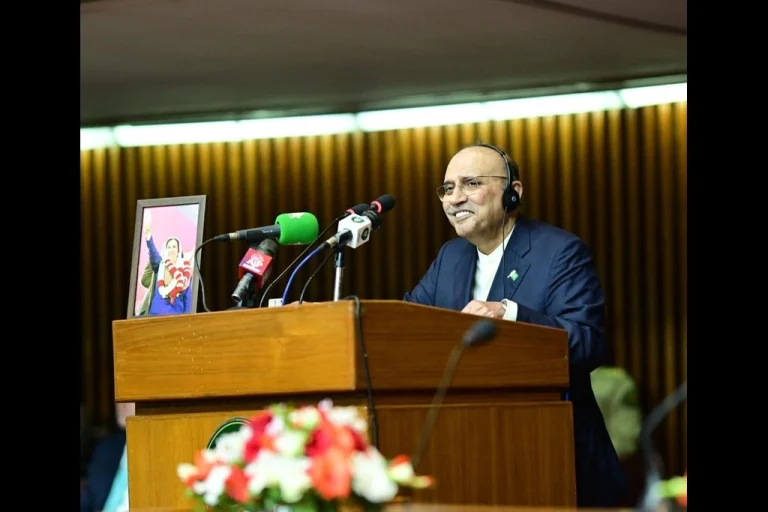Asif Ali Zardari is the former and current president of Pakistan. He is considered among the powerful and five richest people of Pakistan. With his long standing political career, he is one of the noticeable figures of the century in Pakistan’s Political arena. Here in this article we will get to know about his biography,net worth and political career.
EARLY LIFE AND FAMILY OF ZARDARI
Asif Ali Zardari was born on 26 july 1955 in Karachi, Pakistan. He comes from Zardari family which has sindhi-balochi descents. His father was Hakim Ali Zardari who was a well-known industrialist, feudal lord and chief of the tribe.
His mother was Bilquis Sultana who was the daughter of Hassan Ali Effendi who founded Sindh Madrassatul Islam.
He was the only son of Hakim Zardari and has two sisters, Azra Pechuho and Faryal Talpur.
He has two daughters Bakhtawar Zardai and Aseefa Zardari, and a son Bilwal Bhutto Zardari.
In his young days he was interested in competitive sports. He was trained in boxing , and a polo enthusiast. He also captained the polo team known as Zardari Four.
He also played a role as a child actor in a movie, Salgira which was released in cinemas in 1969.
EDUCATIONAL BACKGROUND OF ZARDARI
He attended Karachi Grammar School for early education. For high school studies he joined Cadet College Petaro and St.Patrick’s High School. He completed his higher education studies from London School of Business and Pedinton School in Britain.
MARRIAGE OF ZARDARI AND BENAZIR
Zardari married Benazir Bhutto, the first women prime minister, on 18 December 1987 in a grand ceremony held in Karachi. According to reports around 100,000 people attended their wedding celebrations.
| Asif Ali Zardari – Biography | |
|---|---|
| Full Name | Asif Ali Zardari |
| Born | July 26, 1955 (Age: 69) |
| Place of Birth | Nawabshah, Sindh, Pakistan |
| Nationality | Pakistani |
| Political Party | Pakistan People’s Party (PPP) |
| Spouse | Benazir Bhutto (m. 1987–2007) |
| Children | Bilawal Bhutto Zardari, Bakhtawar Bhutto Zardari, Aseefa Bhutto Zardari |
| Education | Cadet College Petaro, St. Patrick’s High School, Karachi |
| Occupation | Politician, Businessman |
| President of Pakistan | 2008 – 2013, Current |
| Notable Initiatives | 18th Amendment, NFC Award, Aghaaz-e-Huqooq-e-Balochistan, CPEC Agreements |
NET WORTH AND ASSETS OF ZARDARI
Zardari’s net worth is estimated around $2 billion. His fortune grew significantly during the time his wife, Benazir Bhutto, served as prime minister of Pakistan. Zardari’s assets include vast agricultural lands across Pakistan and extensive business holdings. He owns three luxury homes in Pakistan: Bilawal House I in Karachi, Bilawal House II in Lahore, and Zardari House in Islamabad.
Zardari’s wealth is not just limited to Pakistan—he owns luxurious properties worldwide. He reportedly has estates in Surrey, the West End of London, Manhattan ,Dubai, and even a 16th-century chateau in Normandy, France.
POLITICAL CAREER OF ZARDARI
Zardari had a failed political career before marriage as he even lost election on council seat in Nawabshah in 1983.However his marriage to the daughter of former Prime Minister Zulfiqar Ali Bhutto brought him into the inner circle of the Pakistan People’s Party (PPP). Zardari gained political influence during Benazir Bhutto’s first tenure as Prime Minister (1988–1990).
Corruption Allegations and Imprisonment (1990–1993)
After the dismissal of Benazir Bhutto’s government in 1990 by President Ghulam Ishaq Khan, Zardari was arrested on corruption charges. He remained in jail until 1993, when Benazir Bhutto returned to power.
Rise to Power and Influence (1993–1996)
During Benazir Bhutto’s second term as Prime Minister (1993–1996), Zardari held multiple influential positions, including Minister of Environment and later Minister of Investment.In 1996, Benazir Bhutto’s government was dismissed by President Farooq Leghari, and Zardari was once again arrested on charges of corruption and alleged involvement in the murder of Murtaza Bhutto, Benazir’s brother.
Years in Jail and Exile (1996–2007)
Zardari remained imprisoned from 1996 to 2004. During this period, he faced multiple trials for corruption, money laundering, and misuse of power. He was briefly released in 2004 and went into self-imposed exile in Dubai.
In 2007, after Benazir Bhutto negotiated a deal with President Pervez Musharraf, the National Reconciliation Ordinance (NRO) was issued, granting amnesty to politicians, including Zardari, on corruption charges. This allowed him to return to Pakistan.
Co-Chairmanship of PPP and 2008 General Elections
After the assassination of Benazir Bhutto in December 2007, Asif Ali Zardari took over as co-chairman of the PPP, alongside his son Bilawal Bhutto Zardari. He led the party in the 2008 general elections, forming a coalition government with the Pakistan Muslim League-Nawaz (PML-N).
First Term as President (2008–2013)
On 6 September 2008, Zardari was elected as the 11th President of Pakistan, securing 481 out of 702 electoral votes. He became the first civilian president to complete a full five-year term.
After stepping down in 2013, Zardari remained active in politics but focused on strengthening the PPP. He faced renewed money laundering and corruption cases, leading to his arrest in 2019 by the National Accountability Bureau (NAB).
Return to Power and Second Presidential Term (2024–Present)
In March 2024, Asif Ali Zardari was elected as Pakistan’s 14th President, making him the only politician in the country’s history to serve as president twice. He secured 411 electoral votes, defeating opposition candidates in a controversial election.
IMPORTANT INITIATIVES
Here are few important initiatives lead by asif ali zardari during his tenure:
18TH AMENDMENT
One of Asif Ali Zardari’s biggest achievements was the 18th Amendment in 2010, which changed the way power worked in Pakistan’s government. Before this, the President had the authority to dismiss the Prime Minister and dissolve Parliament, a power that had often been misused in the past. Zardari gave up these powers, making the presidency more of a symbolic role and shifting real decision-making authority to the Prime Minister. This amendment also strengthened provincial autonomy, giving provinces more control over their own affairs. Another major change was lifting the two-term limit for prime ministers.
19TH AMENDMENT
Following the success of the 18th Amendment, Zardari’s government introduced the 19th Amendment in 2011 to further refine the judicial appointment process. This amendment was a response to concerns raised by the Supreme Court regarding the selection of judges.
By giving the judiciary more independence, the amendment helped reduce the possibility of political interference in judicial matters.
CPEC
The China–Pakistan Economic Corridor (CPEC) was one of the most significant initiatives launched during Asif Ali Zardari’s presidency. On May 22, 2013, Pakistan and China signed multiple agreements and Memoranda of Understanding (MoUs) to lay the foundation for this multi-billion-dollar project. Zardari, along with Chinese Premier Li Keqiang, oversaw the signing ceremony at Aiwan-e-Sadr, marking a new era of economic and strategic partnership between the two nations.
Aghaz-e-Haqooq-e-Balochistan (AHB) Package
In 2009, Asif Ali Zardari’s government introduced the Aghaaz-e-Huqooq-e-Balochistan (AHB) Package in an effort to address the long-standing grievances of the Baloch people. This initiative aimed to provide greater provincial autonomy, increased representation in national decision-making, and economic opportunities for the local population OF Balochistan. The package promised government jobs, economic incentives, and development funds, along with a commitment to review cases of missing persons.





